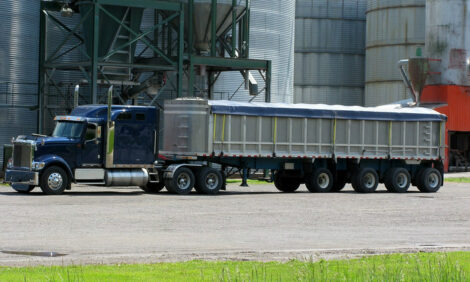



Sudden Egg Drop Was Sign of H1N1 in Ontario Turkeys
CANADA - Further details have emerged of the case of influenza A H1N1 in turkeys in Ontario, announced last week. A sudden drop in egg production in the breeders was the signal of the virus; mortality was only slightly raised.The Canadian veterinary authority sent an Immediate Notification report to the World Organisation for Animal Health (OIE) on 23 October.
The outbreak started on 9 October in turkey breeder grandparents at a farm at Waterloo in Wellington county. There were two houses at the premises with a total of 7,300 birds: house 1 has 3,500 hens; house 2 has 3,500 hens and 300 toms.
In house 1, birds were at week 52. The morbidity is related to the egg drop. During a period of one week, daily egg production dropped from about 1,800 eggs to about 300 eggs – about 80 per cent. The production has since seemed to increase. Very little clinical evidence of disease other than the drop in egg production. A slight increase in mortality was reported (about 10 birds over the three-day weekend) but this may not be associated to the pandemic H1N1, according to the report.
In house 2, a drop in egg production was noted on 21 October.
Initial testing on samples submitted on 12 October was done at the Animal Health Laboratory, University of Guelph, Ontario. Confirmation was carried out at the CFIA National Centre for Foreign Animal Diseases in Winnipeg.
The closest matches for the H1 and M fragments are all pandemic H1N1 2009 (450/450bp, 100 per cent identity and 245/245, 100 per cent identity respectively to a number of human clinical samples).
The full length of the N1 gene was sequenced and the closest matches are all of the pandemic H1N1 2009 type. The identities were 1400/1402 (>99 per cent), gaps = 0/1402 (0 per cent).
The report concludes that, together with the RT-PCR results, the partial sequences of the H1 and M genes and the N1 sequence confirm diagnosis of pandemic H1N1 2009.
The samples have also been inoculated in eggs and may provide some isolates for further analysis.
The premises has an intense biosecurity protocol. The producer has voluntarily quarantined his flock in an effort to prevent further virus dissemination. This approach is consistent with the national policy on the presence of pandemic H1N1 virus in swine and poultry. Ontario Public Health authorities are following up with individuals who had contact with the flock in an effort to determine their exposure and possible sources of infection. At this point, there is no evidence to suggest the flock was infected from an animal source.
Further Reading
| - | Go to our previous news item on this story by clicking here. |









